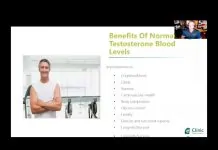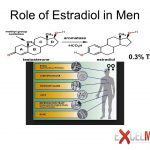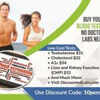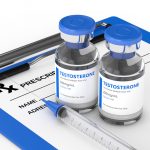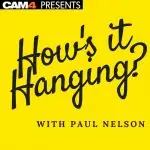This excellent lecture is recommended for clinicians and educated patients.
From largest urology conference in the world (2015)
https://www.aua2015.org/webcasts/webc…&agendaid=7907
TRANSCRIPTION:
Speaker 1: So without further ado, I’d like to bring Dr. John Mulhall to the podium.
Dr. Mulhall: It’s my pleasure to be here. There’s no doubt that there’s confusion, certainly among urologists about the evaluation and the management of a man with low testosterone. The reason for the confusion is largely based on the fact that we have very few guidelines, but they don’t often assess some of the clinical challenges we have on a daily basis. They don’t assess them and give a definitive recommendations because of the absence of randomized placebo-control trials.
My job today is to run through therapeutic options and best practices. As I was thinking about this, I put this into the framework of decision making for you in your clinical practices on a daily basis. Whatever recommendations I will give you here, and I will try separate expert opinion from recommendations, are based on these separate guidelines.
Decision 1.
Who’s a candidate for testosterone supplementation, and what do we base that on? Testosterone levels. Which testosterone levels should we use? We have different guidelines that give us different figures – 350, 300 or 230?
How many tests should we use? How many blood tests? It’s important to understand that when patients have blood work done on the same day, there’s a 15% intra-individual variation on those blood tests.
How many laboratories? When the CDC has done an analysis of four major laboratories in the USA, there’s a 14% co-efficient of variation from labs with a preset testosterone level in the sample given to these laboratories.
What about circadian rhythm? There’s a 15% to 50% variation from a morning to afternoon levels. It’s said that when men are over 50 years of age, we don’t need to worry because the circadian rhythm is blunted. That may be true, but for individuals 50 and 60 and 70 year olds who have a significant variation between morning and afternoon.
What about assay types? It’s becoming clear that the spike effect that we’re still using radio-immune assays and immune assays that liquid chromatography and tandem spectrometry is the ideal way to measure total testosterone level, and yet many laboratories do not do that.
The free testosterone measurement question, if we put 6 different experts up here you’ll get 10 different opinions. That is because the literature is not definitive. While there is a correlation between measured free testosterone and equilibrium dialysis, there is contradictory evidence. It remains clear that the best means of evaluating free testosterone is using equilibrium dialysis.
The shift in the field is away from using a number, to looking at a number and looking at symptoms and signs. Which raises the real problem of introducing subjectivity for the individual commission in deciding who may, or who may not benefit from testosterone supplementation.
This comes from the Endocrine Society guidelines.
On the left, are those symptoms and signs that they believe are more specific. The symptoms on the right less specific. Here’s the problem. When you look at these symptoms, there is approximately a 50% to 60% specificity for these symptoms for men having low testosterone.
What about associated conditions and people that we should be measuring testosterone in? Again, Endocrine Society guidelines, sellar pathology, Type 2 diabetes, chronic corticosteroids, chronic opioids, HIV-associated weight loss, end-stage renal disease, chronic obstructive pulmonary disease, and essentially any significant chronic illness.
What about adjunctive lab testing? Is there a role for LH, particularly when we’re trying to define the cause of hypogonadism and the candidacy for therms, for example, FSH and men who are at risk for fertility problems, and role of prolactin hemoglobin AIC and DEXA scanning is as yet, not completely defined.
What about precautions and contraindications? Prostate cancer and breast cancer still remain a contraindication. Men with a baseline hematocrit over 50% is a concern. Still existing as a precaution is severe lower urotract symptoms and untreated sever sleep apnea. However, at this meeting, there’s at least 1 paper and a couple of papers on sleep disorders and on severe LUTS suggesting that testosterone supplementation may be of benefit to those patients.
Questionnaires – general recommendation is that there is no role in clinical practice for the use of screening questionnaires or response questionnaires, that is the ADAM, qADAM, Aging Male Survey or the NERI screener.
The Endocrine Society guidelines are very clear that there is no role for screening men at this point in time outside of those conditions that we talked about earlier on.
Decision 2.
What type of supplementation? Direct using testosterone or using non-direct means such as using SERMs, select [inaudible 00:05:01] receptor modulators, such as clomiphene citrate or some novel compounds, which we will finish up with, or the role of human chorionic gonadotropin.
How do you choose? First of all, question. Is the patient of reproductive age or does he have an interest in reproduction? If he does, then the recommendation would be that you try to avoid testosterone directly because it will induce oligospermia or azoospermia in some men within a few months of starting testosterone therapy. However, there are centers in the United States that are now looking at testosterone plus ACG as a means of abrogating that.
Men who have concerns about testicular atrophy should avoid using direct testosterone and baseline serum testosterone level where men who have profoundly low testosterone levels, certainly below 100, we may be struggling to get them up into a physiologic range by using a serum.
Clomiphene citrate is a SERM which increases serum gonadotropins. These agents are ideal for men with low to normal LH levels. However, what LH level is a cut off, and what about older men? There is evidence in the endocrine literature that older men just don’t respond as well to SERMS.
hCG, as you know as urologists, is structurally similar to LH and is good at acting directly on the Leydig cells. This agent, again, is ideal for men with no LH and responsive testes. They do not suppress gonadotropins and thus they do not suppress spermatogenesis and do not cause testicular atrophy.
Decision 3.
What form of testosterone? You know what these forms of testosterone are. Not on here, and I should mention is transnasal testosterone, which is a new player in the game. We have all of these different options. How do you choose? In the USA now, we’re faced with the decision now about insurance coverage, as many insurance carriers do not cover transdermal testosterone.
Baseline testosterone levels. Again if somebody has a total T level of 50, we may struggle to get them into the middle total of the range by using a transdermal agent. What about concern about transference? If the patient has a 3-year-old child at home and is worried about transference, then of course we need to think about non-transdermal therapy. Patients are needlephobic, both for a subcutaneous pellet and also for intramuscular testosterone.
Then the concept of integrateability. How can a patient integrate the testosterone modality into their lifestyle? How busy are they? How athletic are they? How often do they travel? Transdermal agents in general, we’re getting into the physiologic range. For 80% or more of the patients, there are transference concerns. There are bathing concerns. You need to separate the gel from bathing for several hours. There are convenience concerns and some concealability concerns when you come to transdermal patches.
This is just a run through of the gels that exist is the USA at the moment, and some of the high points. Looking at intramuscular testosterone, we’ve cypionate and enanthate – slightly different half lives. Testosterone undeconoate, which is called Aveed in this country and [inaudible 00:07:50] internationally. It causes a large volume of fluid. It is associated with very unusual and uncommon incidences of pulmonary oil microembolism, and it is an office-based injection versus at-home-based injection.
Decision 4.
What dosing strategies? These are the typical dosing strategies for clomiphene, hCG gels, and intramuscular testosterone. I’ll make one point. In the world of intramuscular testosterone, the trend is moving towards lower doses and shorter durations of treatment.
Decision 5.
Failure to achieve therapeutic levels. Failure to resolve symptoms and signs. Skin reactions for gels and patches. Polycythemia, very important. Gynecomastia, and then do we discuss thrombotic events and cardiovascular events as was suggested by Dr [Bossaria 08:34] earlier on, and then POME, of course.
Decision 6.
How do we monitor what laboratory tests? Which labs? Total T, Hematocrit, estradiol, LH for those patients who are certainly on clomiphene citrate or serum, or then PSA testing as our guidance is from the AUA. When should we do that? The guidance on this is not very clear. Somewhere from 2 to 12 weeks after commencing testosterone at transdermally clomiphene or ACG. How often should we do it, and how long after intermuscular testosterone is not well delineated.
Laboratory testing. Target total level or monitoring symptoms? The trend is towards looking at both. What about the timing of T-level testing for patients on IMT. Should it be mid-cycle or should it be a peak-and-trough level? That is completely undefined.
How often should laboratory testing be done? The recommendations appear to be somewhere between every 3 to 6 months.
What about repeat DEXA scanning? The recommendations for those men who have normal bone density and baseline on treatment should have their bone-density testing done approximately 2 years after starting treatment.
Decision 7.
When should patients follow up? Symptom assessment approximately 1 to 3 months after achieving therapeutic levels. For patients who are going to respond symptomatically to testosterone supplementation, or their symptoms are due to low T, the recommendation is that their symptoms should be resolved within 2 to 3 months of achieving a therapeutic level. Then a decision is made on longer-term therapy. How often should people follow up? Approximately every 6 to 12 months, but again, there are no definitive recommendations.
Decision 8.
What about managing adverse events? Skin irritation, erythrocytosis, gynecomastia, failure to resolve bone-density loss, and PSA elevation. We just don’t have good recommendations for the management or the clinical-care pathways in the management of these adverse events.
The novel strategies. There are several papers looking at oral therapies here. Enclomiphene, subcutaneous injectors…
Speaker 1: I’ll need you to start summing …
Dr. Mulhall: Nanotechnology and intratesticular stem-cell therapy. I’ve tried to give you a framework for your patients when you’re looking at decision points. I’ve tried to give you recommendations where they exist. There’s an absence of many of the areas where we’re clinically challenged.
Thank you very much.







